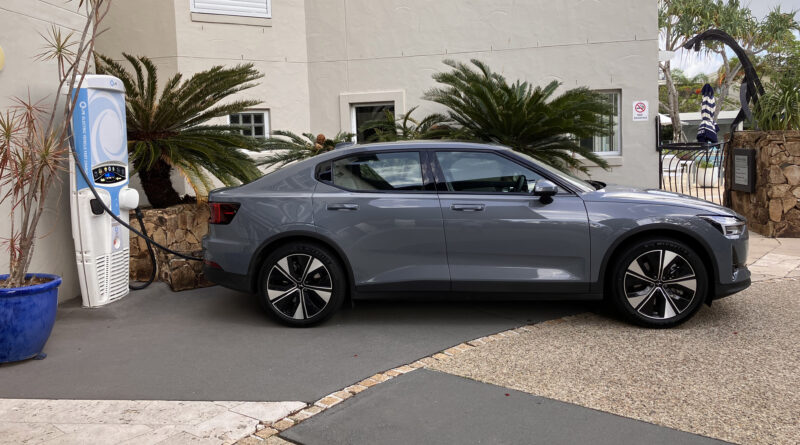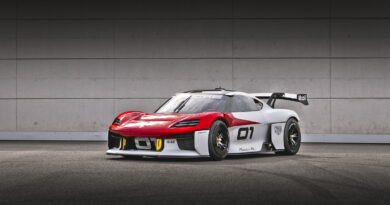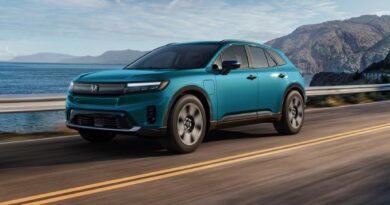2024 Polestar 2 RWD review: why the cheaper entry level beats the dual motor AWD
It’s no small thing, shifting a car from front- to rear-wheel-drive.
Yet here’s Polestar, for the 2024 version of its ‘2’, gifting drive to the correct end of its electric fastback sedan.
Really, it should always have been this way. Put bluntly, it drives far better than the outgoing front-wheeler.
For those of us who still care about the experience, the new 2 feels more athletic, engaging and a dash more grown-up – like a small executive luxury sedan really should.
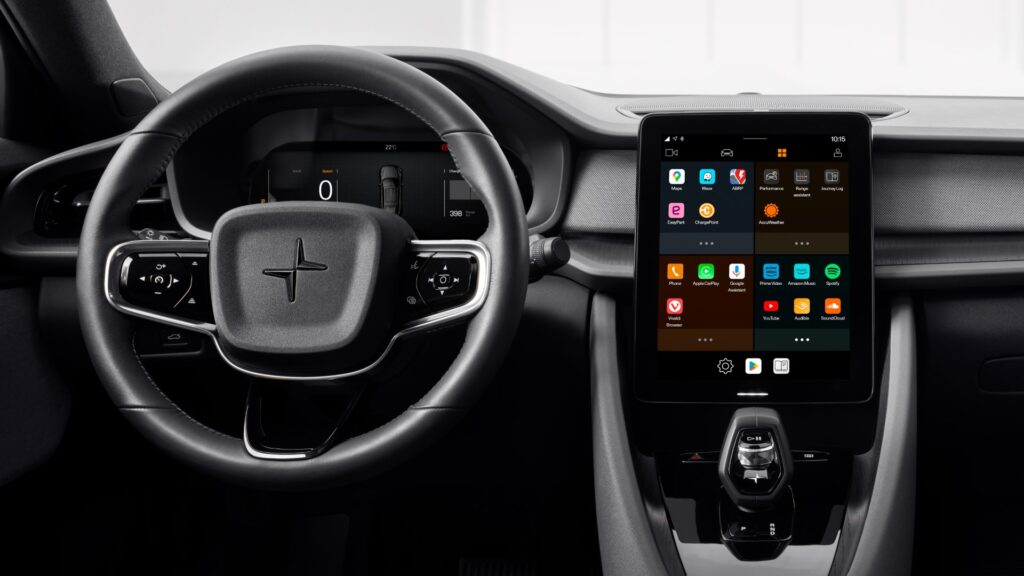
Of course, you can still buy a dual motor all-wheel-drive Polestar 2, but I’m here to tell you that you really don’t need to.
I’d previously picked the now-retired single motor front-wheel-drive version ahead of the AWD, and now that drive’s shifted aft, the decision’s even easier.
The rear-drive Polestar 2 is cheaper, lighter, more efficient and more playful than its AWD stablemate, and is an absolute range hero.
Its 655km WLTP range (in Long Range guise) is over 10 per cent above the equivalent Polestar 2 AWD, and its figure bests everything in this price bracket – Telsa Model 3 Long Range (629km) and Hyundai Ioniq 6 RWD Extended Range (614km) included.
Range anxiety? Properly banished.
Polestar 2 RWD vitals
Over the course of two weeks, I lived first with a Polestar 2 Long Range Dual Motor (the all-wheel-drive one), with optional Performance Pack. I then swapped into a Long Range Single Motor, which ultimately proved, for me, the pick of the pair.
The cheapest 2024 Polestar 2 available is a Standard Range Single Motor – with 200kW/490Nm, 69kWh battery and 546km range – costing $67,400 plus on-roads, before any incentives.
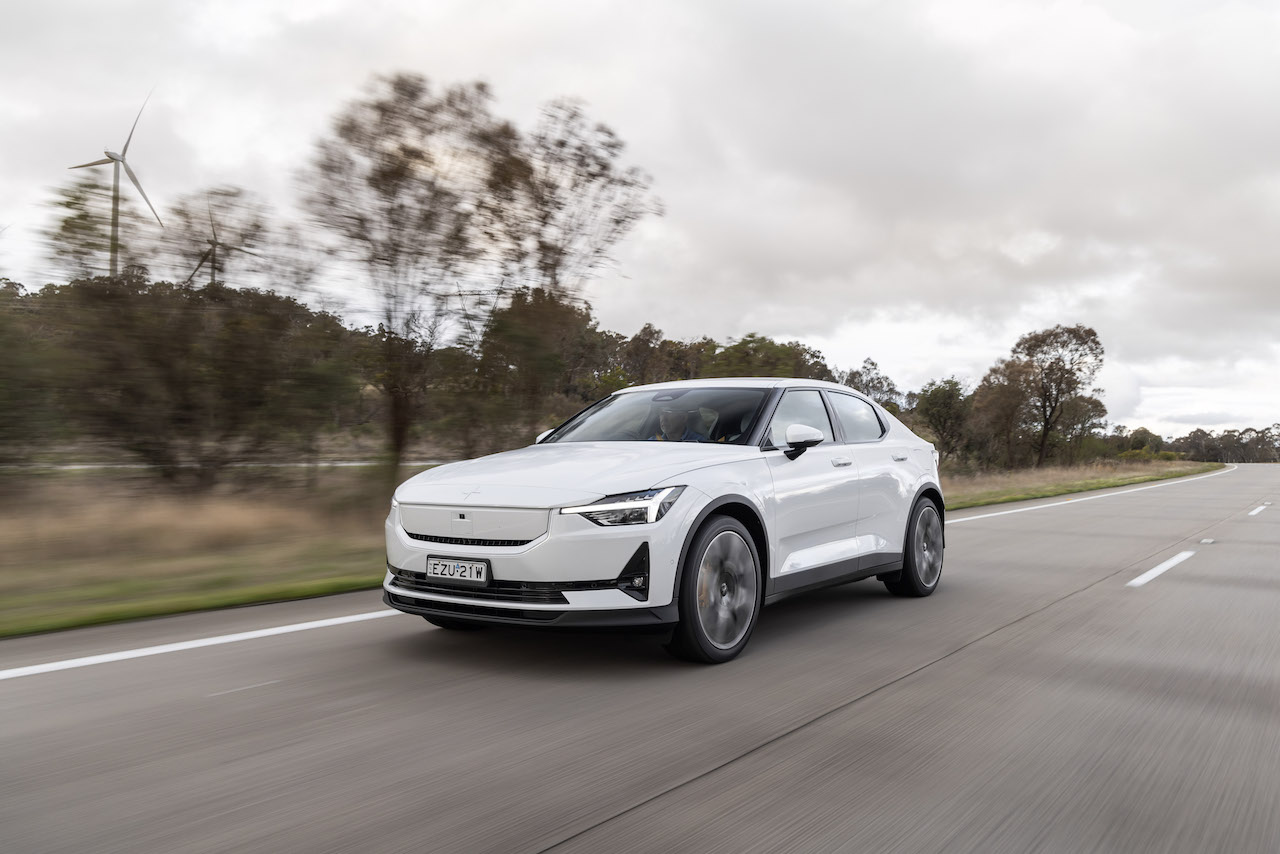
Personally, I’d be comfortable with that already ample range. But it’s a reasonable $4000 more to upgrade to our test Long Range – this $71,400 RRP version featuring an 82kWh battery and stonking 655km range.
The latter adds 20kW and drops the 0-100km/h time from a quick enough 6.4-seconds to 6.2-seconds -both these figures shaving a second off times set by the outgoing FWD Polestar 2s.
Boon for buyers of the new RWD Long Range is its larger battery can charge up to 205kW rather than the entry-level’s 135kW. For DC charging, that sees a 10-80% boost drop from 34 minutes to 28 minutes.
Energy consumption between these two cars is near identical: 14.9kWh/100km the Standard Range, and 14.8kWh/100km the Long Range.
Both share space limitations in the rear seat and boot (although our family of four coped), with rear headroom for adults a particular bugbear.
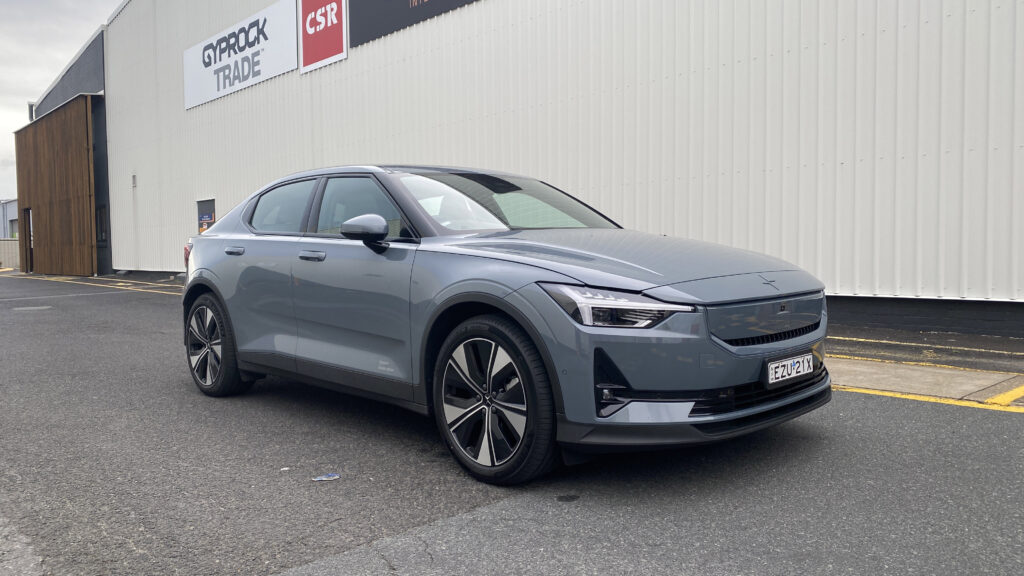
The case for the Polestar 2 Dual Motor AWD
I’ll get onto the comparative drive experiences shortly, but what reasons are there to hop in the pricier all-wheel-drive Dual Motor Polestar 2?
In a nutshell: acceleration.
I’ve chatted to enough Tech Bros and the like to grasp straight-line speed is bloody important to many EV buyers. And I get it. There’s something lovely about putting the shoe in and silently ploughing towards the horizon at warp speed.
But seriously. You get bored of it. Plus you can lose your licence in a heartbeat.
If you’re in a V8 Ford Mustang and playing at tyre-smoking acceleration, there’s ample aural warning reminding of your endeavours. You’re under no illusions about the attention you’re drawing, you’re rapidly at three figures and a screaming bent eight reminds you should reign it in.
A mis-timed squirt in a Polestar 2 Dual Motor and you’re at 100km/h so rapidly – in near silence – that you barely realise you’re doing anything wrong. Cameras and police radars, meanwhile, only care about the speed you’re clocked at. Then the fine and points that’ll follow.
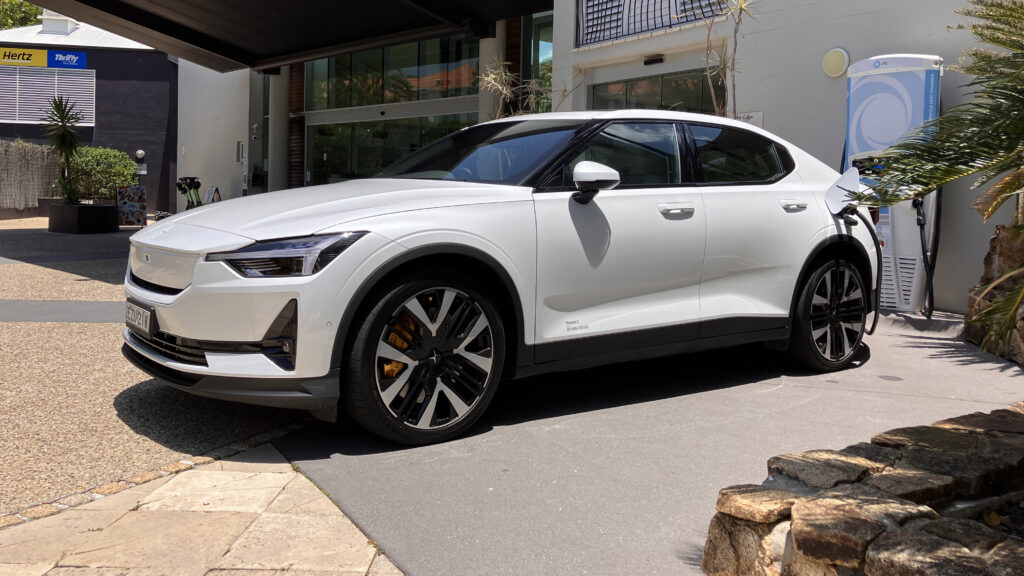
But okay, during the honeymoon period, you’ll enjoy the mad acceleration. A Polestar 2 Long Range Dual Motor ($76,400) has the same 82kWh battery, up to 205kW charge speed, and cracks 100km/h in 4.5 seconds.
Move into the same vehicle with optional Performance Pack (it’s now $87,900 before on-roads) and you hit the ton in only 4.2-seconds: a supercar number of not long ago. It is ballistically, comically fast. If not as neck-snapping as a Tesla Model 3 Performance.
The Dual Motor PP ups power from 310kW to 350kW, but retains the non-PP’s chunky 740Nm of torque.
Energy use is obviously higher in these heavier Dual Motor Polestar 2s. It’s 15.9kWh/100km, or 16.8kWh/100km with Performance Pack. Range suffers as a result – 593km and 568km respectively.
Specs appeal
The 2024 Polestar 2s may have seen revolutions under the skin, but visually, little’s changed. Nor is there much to differentiate between grades.
The revised front end now features Polestar’s ‘SmartZone’ – including a front-facing camera and radar to bring improved standard safety kit.
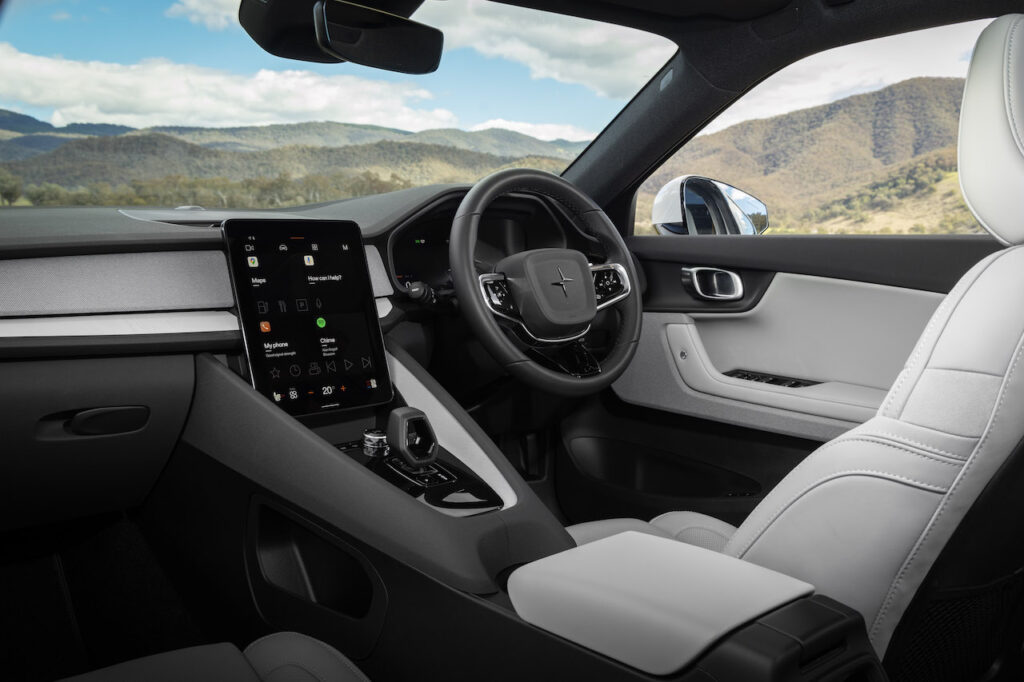
Blind spot warning and assist, cross traffic alert, lane keep, rear collision warning/mitigation, speed sign information, and 360-degree surround view camera all come standard range-wide. Good. The previous model’s sub-par active safety was a sticking point.
The Polestar 2’s strong point has always been – and remains – its cabin class.
So the rivalling Tesla Model 3 RWD is a chunk cheaper at $61,900 plus on-roads, but its truly no match for the Polestar’s well-engineered and user-friendly interior. If a Tesla’s strikingly minimalist cabin’s too much of a departure from the norm, you’ll feel far more at ease in a Polestar.
The slim, hollow gear shifter is as much an art piece as it is functional, while a knurled volume/audio control knob has a beautiful tactile feel. We endure enough digital buttons/screens in our lives these days; it’s nice when a car does proper touch points well.
Specifications are basically the same range-wide. They include 19-inch alloys, an 11.2-inch vertical central screen with Android Auto OS, 12.3-inch digital instrument cluster (simple, clear and brilliant), power front seats, wireless phone charging, dual zone climate control and four USB-C ports.
It runs Apple CarPlay as well as Android Auto (both wired), while access to the Google Play Store brings plenty of fun. Ideal if you’re waiting at a charge station, or just to keep the kids entertained.
Our two rapidly fell in love with the Polestar, settling into YouTube and Prime Video, then exploring the games options. Beach Buggy Racing (highly addictive) is there, just like in a Tesla, but you must play using the touchscreen rather than it being linked to the Tesla’s steering wheel. Your front tyres will thank you.

The Polestar 2’s seats are ’embossed textile’ – we’d call them cloth – and feel durable, comfy and decent quality. Living in Queensland, cloth is often my preference as they don’t superheat in our lengthy hot summers.
But all Polestar 2s continue to miss key features that are criminally not standard.
For its price, and as Polestar champions premiumness, the omissions are enough to drive you to rival offerings. Just look at the similar-sized and cheaper BYD Seal’s standard features in Premium and Performance trims and it’s little wonder many EV buyers are sending their dollars that direction.
You must drop $3500 on all models to get the Pilot Pack. This is the only way to secure radar cruise control – a feature found in practically every sub-$40,000 car. Come on, Polestar. The Pack also brings lane centring and Pixel LED headlights with adaptive high beam.
A Plus Pack for $6000 adds WeaveTech seat trim – almost feels like a combination of wetsuit material and denim – a pumping 13-speaker Harman Kardon 600W sound system, heat pump, heated steering wheel, more functionality to the power seats, power tailgate and a digital key so your smartphone works as an authentification device.
The big addition with the Plus Pack is a full-size panoramic glass roof. It does bathe both the front and rear seats in light rather wonderfully, but good grief it means the cabin gets hot in summer. There’s no retracting curtain for it – Polestar says this allows for more headroom – but it really, really needs one.
For the money, glass roof aside, I’d want all of the above as standard. And as you must pay the same for these extras regardless of model grade, it pushes my Polestar 2 preference firmly into the entry-level RWD offering.
Our RWD Long Range had optional ventilated Nappa leather upholstery (a further $6000), with lovely black ash cabin inlays. But now this car’s at $86,900 before on-roads.
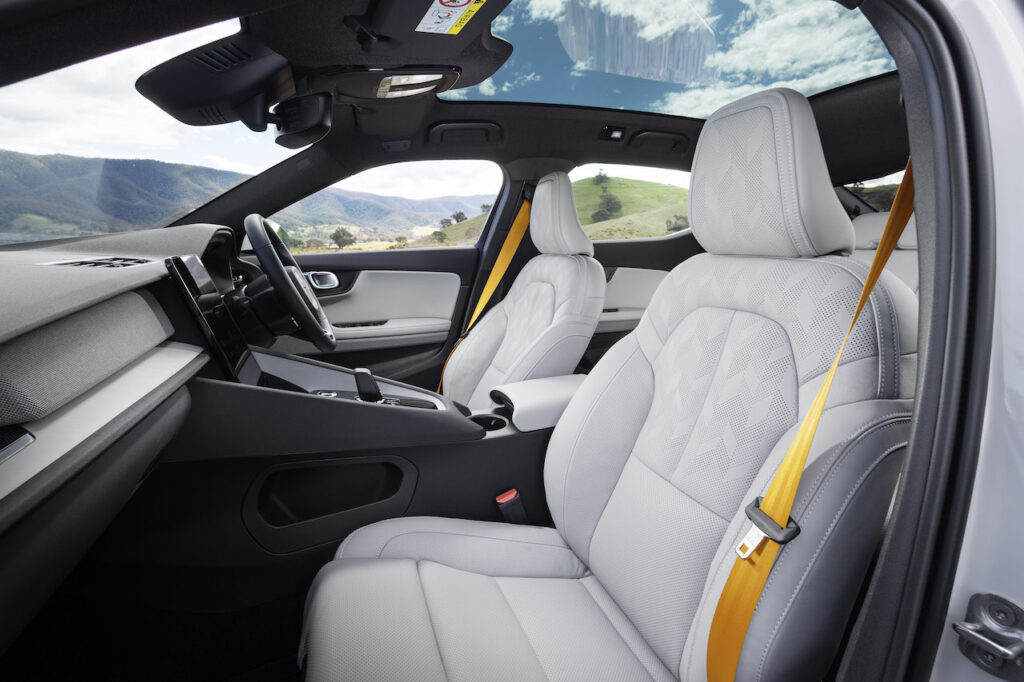
If that feels pricey, our specc’d up AWD is $103,400, not helped by over $4000 in Luxury Car Tax (LCT) because, yep, you’re now in that arena. The LCT threshold for EVs for the 2023/24 tax year is $89,332.
It also means complications if you plan on financing a Polestar 2 AWD PP through a novated lease so you pay zero fringe benefits tax. The entry-level RWD model easily makes it with a few options; life’s going to be harder with the AWD. For me, another win to the RWD model here.
But the Performance Pack on the AWD (it’s not available on the single motor RWD) does mightily boost the go-fast and go-slow bits.
It includes a software upgrade for improved motor response with launch control (hence the 4.2-seconds to 100km/h split), 20-inch forged alloy wheels, chassis tuning, manually adjustable Öhlins Dual Flow Valve dampers and a Brembo big brake kit. Oh, and there’s gold for the brake calipers, valve caps and seatbelts.
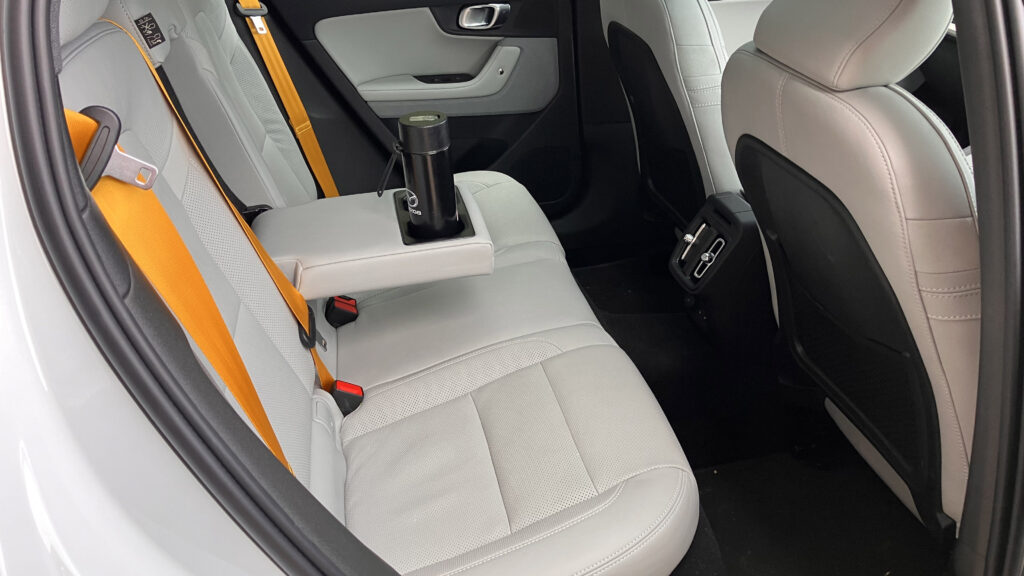
Driving: RWD vs AWD
If I’m off to the track or can find a breathtaking twisty mountain road, it’s all about the Polestar 2 AWD with Performance Pack. But reality bites: I’m lucky to get a few such drives per year.
Look, someone may prove me wrong, but I reckon you’re as likely to find a Volvo XC90 at a race track.
The upgraded brakes and suspension will help its cause at a circuit, and as long as the Polestar 2’s batteries and components don’t get all hot and flustered on a track day, at least you’ve got a serious amount of range to chew through before playtime ends. And it’s so bloody quick you’ll not be short of thrills.
I just don’t reckon the Polestar 2’s a sports car. Nor should it want to be. I prefer it to be a polished executive cruiser to chomp through highway kilometres or the daily grind without any range anxiety.
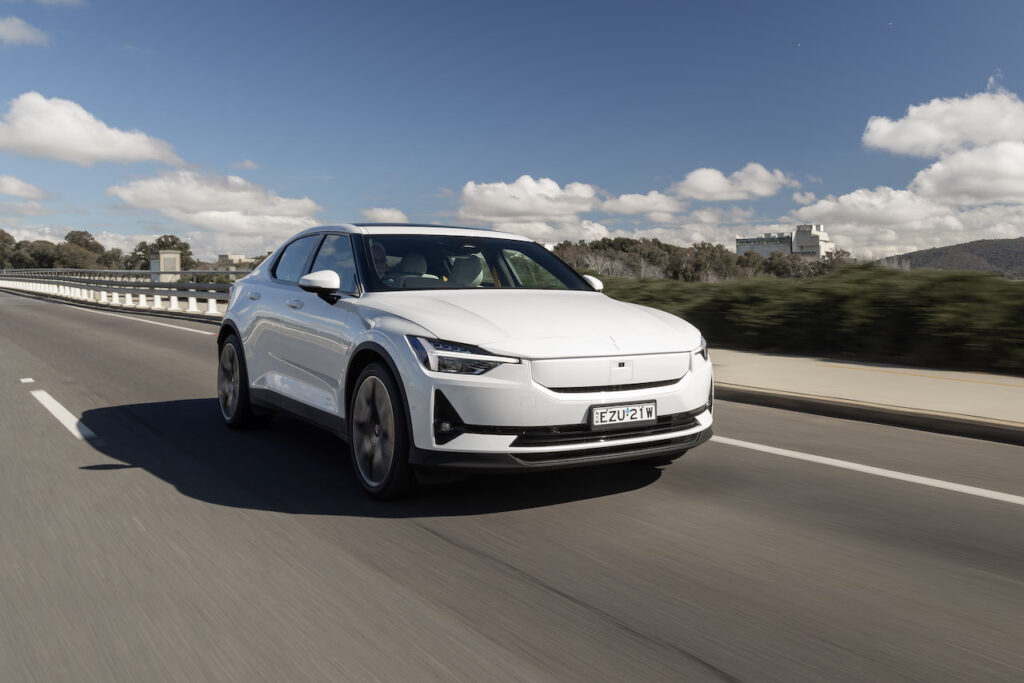
I sought out a decent set of corners and let the 2 AWD loose. Next to a proper (petrol) sports sedan/hatch, it’s just too weighty to be properly throw-around fun. It feels solid, sturdy and there’s superb grip with next to no body roll, but true personality’s tough to find.
Nothing unusual for an EV there, but the RWD version, on the same bit of road, was without question the more playful of the two. It still had superb instant torque acceleration between bends, but when in the corners and working it hard, it felt lighter and the rear so much more communicative.
It doesn’t mind wagging its tail, either. Get on the power mid-corner and you’re quickly in opposite lock land. Not in a scary Colin McRae way, but like in an old-school small rear-drive sedan way. It won’t challenge a BMW 3 Series for feedback and driver joy, but there are rays of light here.
I’m a focus group of one, but truly, I came away with a bigger grin on my face in the far slower RWD Polestar than I did the AWD. A bit more steering and brake feedback (in both versions) would be warmly appreciated, though.
I found the ride comfort on smaller 19-inch wheels and without the fancy dampers better. Both RWD and AWD ride firmly, but the RWD better dealt with harsher hits. I’ll caveat that by saying I didn’t adjust the Öhlins dampers on the AWD to see if it would ride softer – crawling under the car to do this wasn’t on my wish list.
The RWD was easier to drive smoothly, too. The AWD can jolt forward if you don’t massage the throttle, so eager is it to unleash all that torque.
Credit to the AWD in the wet, though. Its roadholding on its 20-inch Continental SportContact 6 tyres was deeply impressive, and there was no vulgar wheelspin or torque steer when lighting it up.
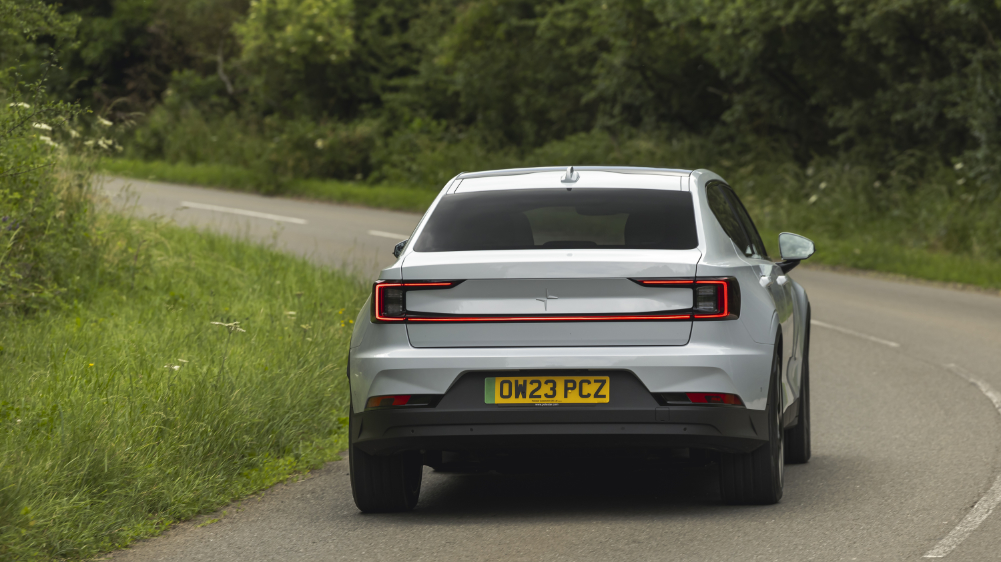
The RWD’s 19-inch Michelin Primacy 4 tyres didn’t enjoy the wet quite so much. They trump the Continentals for road noise (Primacy 4s are impressively quiet), but getting on the throttle too soon on a wet roundabout means things get spicy.
As a town car, where let’s be honest most Polestar 2s will see service, the RWD did everything the AWD did, but with just a bit more polish and hush. And you can do more of it between charges.
The RWD’s the pick
The rear-drive Polestar 2 is more fun – if less mind-blowing – to drive than the AWD, but also cheaper, slightly more comfortable and with longer range.
Both are class-filled, easy to live with and share specification – it’s only if you want the Performance Pack you must get into a dual motor AWD.
For the vast, vast majority of intended use, the RWD does all you need. There are speed thrills enough here – the AWD truly feels like overkill performance in 99% of scenarios.
It’s a class pick no matter which Polestar 2 you may choose. But the RWD’s positives outweigh the AWD’s and for $5000 less.
Pick the Long Range version with faster charge time and 655km range – many will only need once a week recharges – and you’ve nailed the sweet spot.
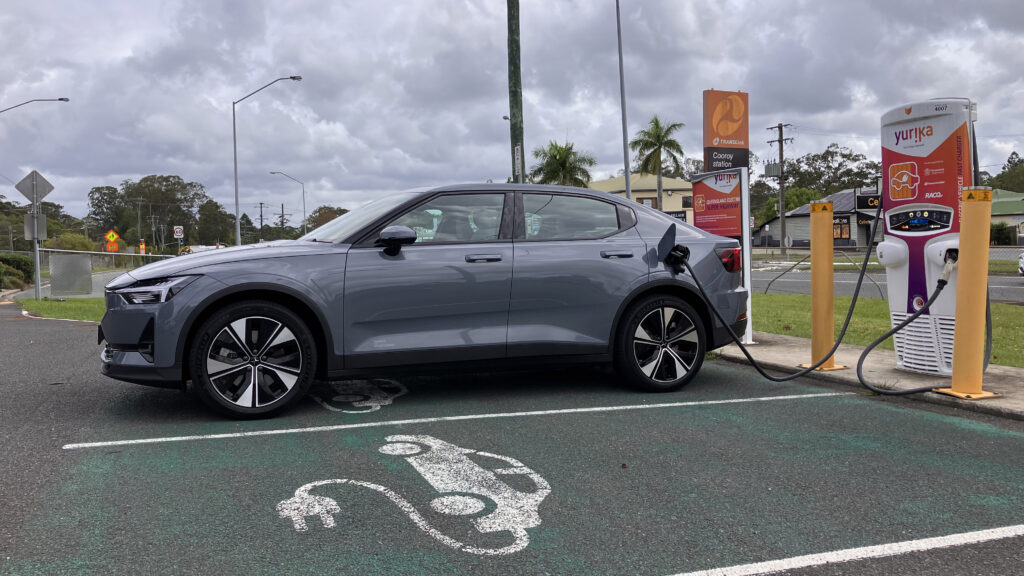
Polestar 2 Long Range Single Motor specifications
Price: From $71,400 plus on-road costs
Basics: EV, 5 seats, 5 doors, liftback sedan, RWD
EV range: 655km (WLTP)
Battery capacity: 82kWh (79kWh usable)
Battery warranty: 8 years/160,000km
Energy consumption: 14.8kWh/100km (WLTP)
E-motor: permanent magnetic synchronous rear axle, maximum output 220kW490Nm
AC charging: 11kW, Type 2
DC charging: 205kW, CCS
0-100km/h: 6.2 seconds
Polestar 2 Long Range Dual Motor with Performance Pack specifications
Price: From $85,400 plus on-road costs
Basics: EV, 5 seats, 5 doors, liftback sedan, AWD
EV range: 568km (WLTP)
Battery capacity: 82kWh (79kWh usable)
Battery warranty: 8 years/160,000km
Energy consumption: 16.8kWh/100km (WLTP)
E-motors: Permanent magnetic asynchronous front axle, permanent magnetic synchronous rear axle, maximum output 350kW/740Nm
AC charging: 11kW, Type 2
DC charging: 205kW, CCS
0-100km/h: 4.2 seconds

